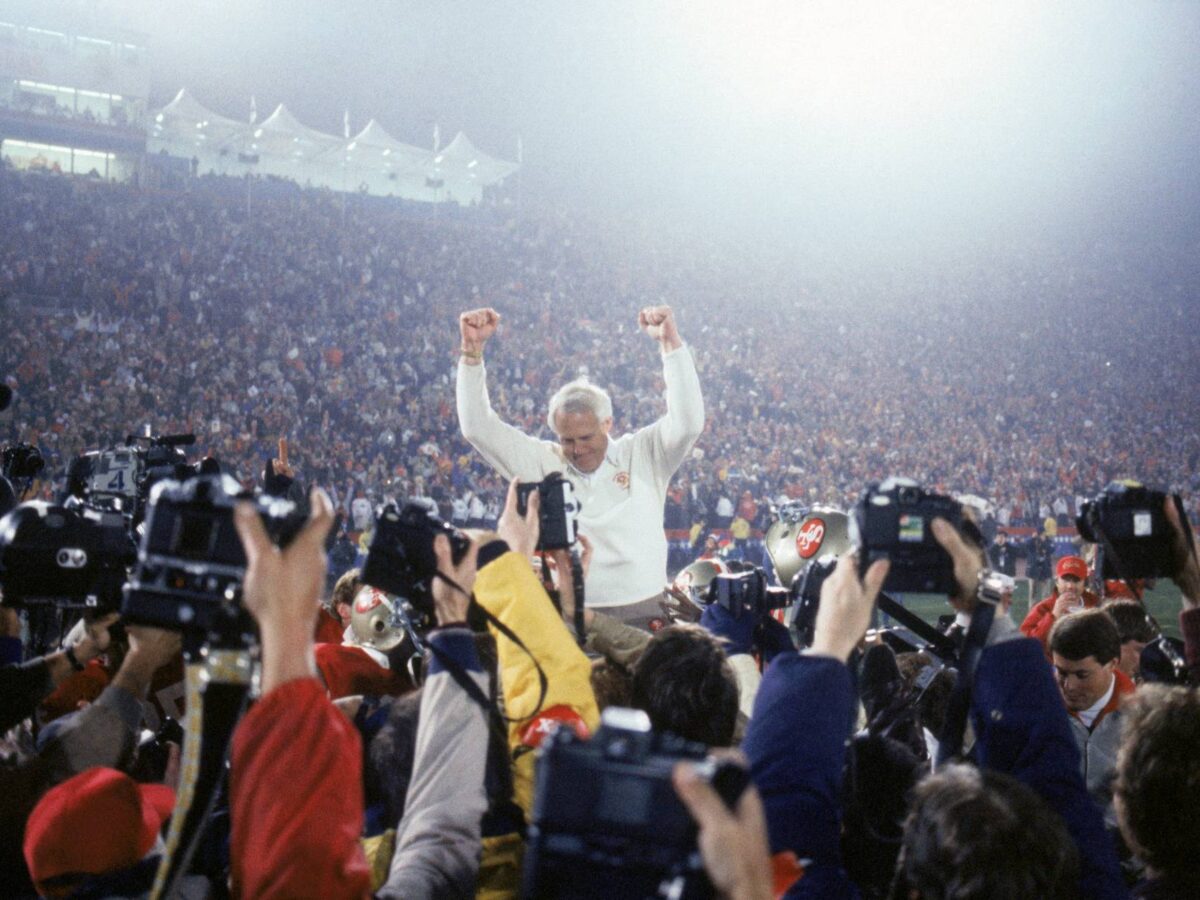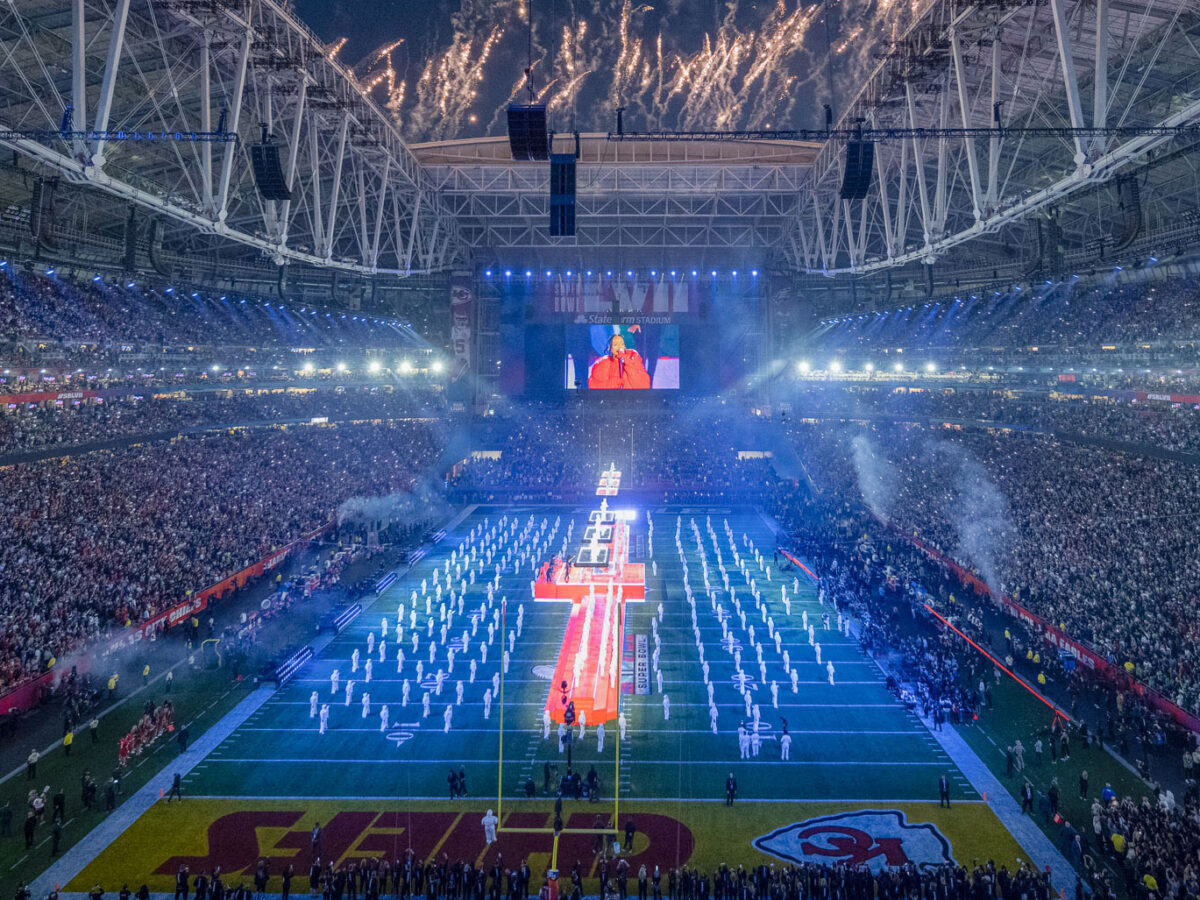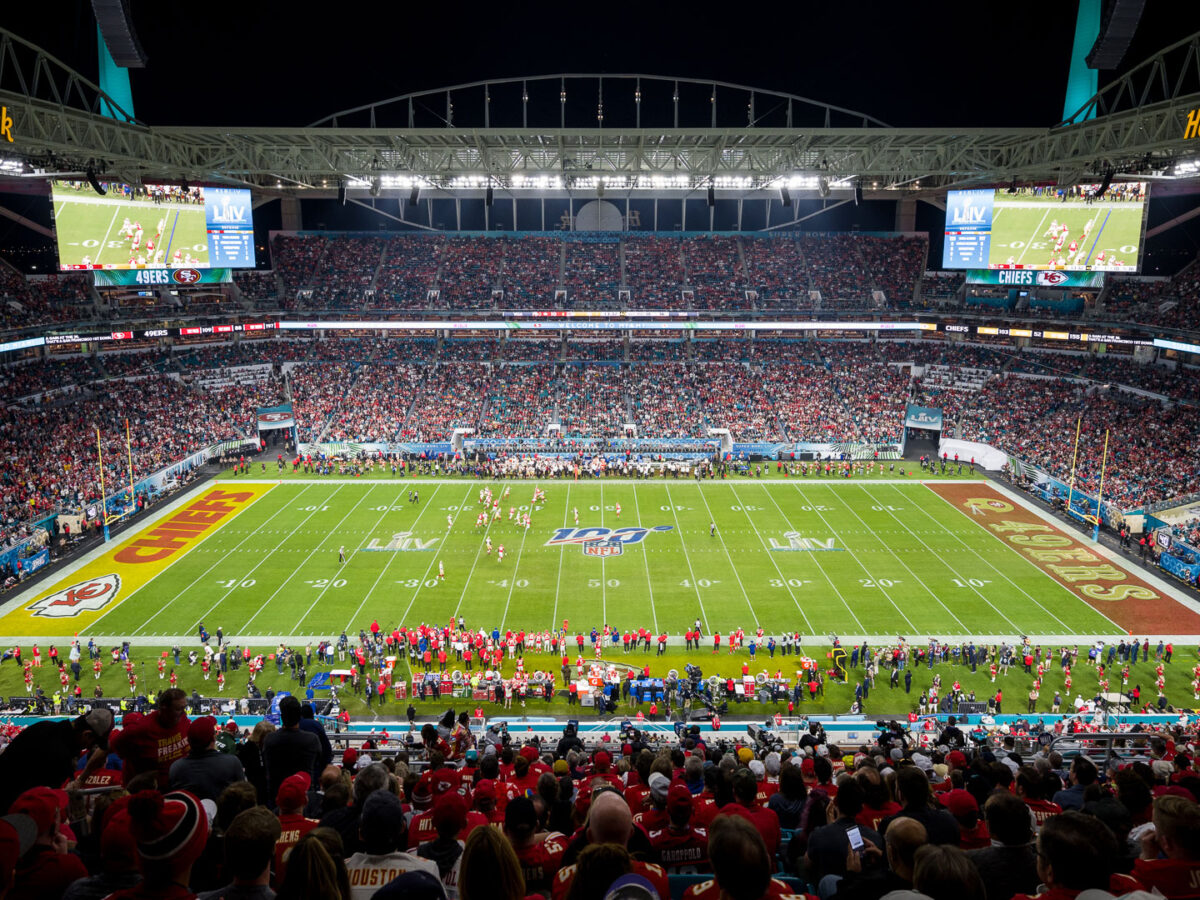NFL Super Bowl
Event
-
Client
National Football League
-
Disciplines
Multiple Locations, United States
National Football League
Populous has been involved in the Super Bowl for four decades, helping orchestrate thousands of elements — the stadium preparations, operations management, construction of game day facilities — most of which are invisible to fans and TV cameras. All that attention to detail means the game day spotlight falls exactly where it should: on the field.
In 1967, the first Super Bowl unfolded in Los Angeles in front of a stadium with 32,000 empty seats. The pregame entertainment included a local high school drill team. You don’t need to be a football fan to recognize how much things have changed in the decades since. Populous has played no small part in that incredible transformation.
What began in 1985 as a request to expand the facilities for Super Bowl XIX, has resulted in a decades long partnership with the NFL. Two legendary quarterbacks, Joe Montana and Dan Marino, faced off as the San Francisco 49ers took on the Miami Dolphins. The clash on the field was watched by a record audience. Since then, the world’s largest sports league has entrusted its biggest showcase to our diverse team of event specialists.
Our expert guidance involves the orchestration of thousands of elements, most of which are invisible to fans and TV cameras. As the NFL’s coordinating firm, we’re responsible for the host stadium facilities, operations planning and management. Our team oversees all aspects of facility procurement and construction for game day operations facilities, ensuring the highest standards are met. We even design the Teammate Check-In — an off-site facility where each of the 14,000-16,000 people who work at the stadium on game day can collect their credentials.
The scale of operations and venue footprint required for the Super Bowl dwarfs those of a regular season game. Security requires that the perimeter is extended outwards from the stadium by at least 300 feet, creating an enormous campus that is home to all kinds of temporary structures, from operational buildings like office trailers and security tents, to party sites and fan zones where the pregame buzz is generated.
You must ensure the crossover between front-of-house and back-of-house spaces is integrated and nothing will cause a problem. We want an unmatched experience for fans and for the teams.
Employing sophisticated analysis of crowd flow and crowd dynamics, including historical data gathered from past events, we’re able to anticipate timings of people approaching the stadium and increase staff numbers at peak times, making entry into the venue as seamless as possible. This information is also useful in mapping out the fan journey, so that we can provide input into the wayfinding strategy.
In recent seasons, we have been working with Super Bowl host cities, designing downtown master plans and spectator areas for festivals and events. Our involvement extends to the staging of the “Opening Night,” which is the introduction of the participating teams to the host city.
Through meticulous planning and teamwork, our staff and partners at the NFL pull off the unforgettable each year. Host cities attract people for days before and after the game, generating millions in economic activity. The NFL beams its brand into hundreds of millions of homes across the world. For multi-day events like the Olympics, any issues that arise can be fixed and dealt with on future event days. The Super Bowl doesn’t afford our team that luxury — we only have one day to get things right. No hitches before, during or after the game means the fans can focus on the football and the excitement that builds around it.
-

After winning Super Bowl XIX, head coach Bill Walsh of the San Francisco 49ers celebrates -

Rhianna performs at Super Bowl LVII at State Farm Stadium -

Super Bowl LIV at Hard Rock Stadium
Our expert guidance involves the orchestration of thousands of elements, most of which are invisible to fans and TV cameras. As the NFL’s coordinating firm, we’re responsible for the host stadium facilities, operations planning and management. Our team oversees all aspects of facility procurement and construction for game day operations facilities, ensuring the highest standards are met. We even design the Teammate Check-In — an off-site facility where each of the 14,000-16,000 people who work at the stadium on game day can collect their credentials.
The scale of operations and venue footprint required for the Super Bowl dwarfs those of a regular season game. Security requires that the perimeter is extended outwards from the stadium by at least 300 feet, creating an enormous campus that is home to all kinds of temporary structures, from operational buildings like office trailers and security tents, to party sites and fan zones where the pregame buzz is generated.
You must ensure the crossover between front-of-house and back-of-house spaces is integrated and nothing will cause a problem. We want an unmatched experience for fans and for the teams.
Todd Barnes
Populous Senior Principal
Employing sophisticated analysis of crowd flow and crowd dynamics, including historical data gathered from past events, we’re able to anticipate timings of people approaching the stadium and increase staff numbers at peak times, making entry into the venue as seamless as possible. This information is also useful in mapping out the fan journey, so that we can provide input into the wayfinding strategy.
In recent seasons, we have been working with Super Bowl host cities, designing downtown master plans and spectator areas for festivals and events. Our involvement extends to the staging of the “Opening Night,” which is the introduction of the participating teams to the host city.
Through meticulous planning and teamwork, our staff and partners at the NFL pull off the unforgettable each year. Host cities attract people for days before and after the game, generating millions in economic activity. The NFL beams its brand into hundreds of millions of homes across the world. For multi-day events like the Olympics, any issues that arise can be fixed and dealt with on future event days. The Super Bowl doesn’t afford our team that luxury — we only have one day to get things right. No hitches before, during or after the game means the fans can focus on the football and the excitement that builds around it.
Explore some of our best work around the world
Discover how we transform ideas into reality, fostering connections that bridge cultures and celebrate the beauty of human interaction.
↳ StartLorem ipsum dolor sit amet consectetur, adipisicing elit. Non facere corporis et expedita sit nam amet aut necessitatibus at dolore enim quis impedit eius libero, harum tempore laboriosam dolor cumque.
Lorem, ipsum dolor sit amet consectetur adipisicing elit. Illo temporibus vero veritatis eveniet, placeat dolorem sunt at provident tenetur omnis, dicta exercitationem. Expedita quod aspernatur molestias eum? Totam, incidunt quos.